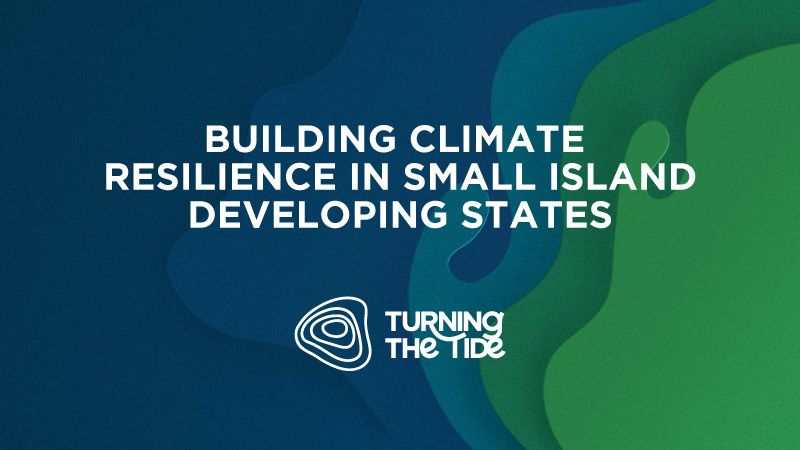In Solomon Islands, marine protection must put livelihoods front and center
As small island nations in the Pacific look to expand protected areas, creating mechanisms for effective community management will be key to ensure future generations can benefit from the ocean too.

Villagers in the Saeraghi community on Ghizo Island, located in the western provinces of the Solomon Islands, have long relied on sea grape harvesting for their livelihoods.
In a region with one of the country’s most biologically rich ecosystems, these small green bubble-like plants grow alongside mangroves, and for decades were a key source of income as they could be sold at markets.
But according to the World Wide Fund for Nature Pacific Solomon Islands, they had been mismanaged and overharvested due to a lack of an effective local management system — a problem only made worse by climate change as sea grapes are sensitive to temperature changes and water salinity fluctuation.
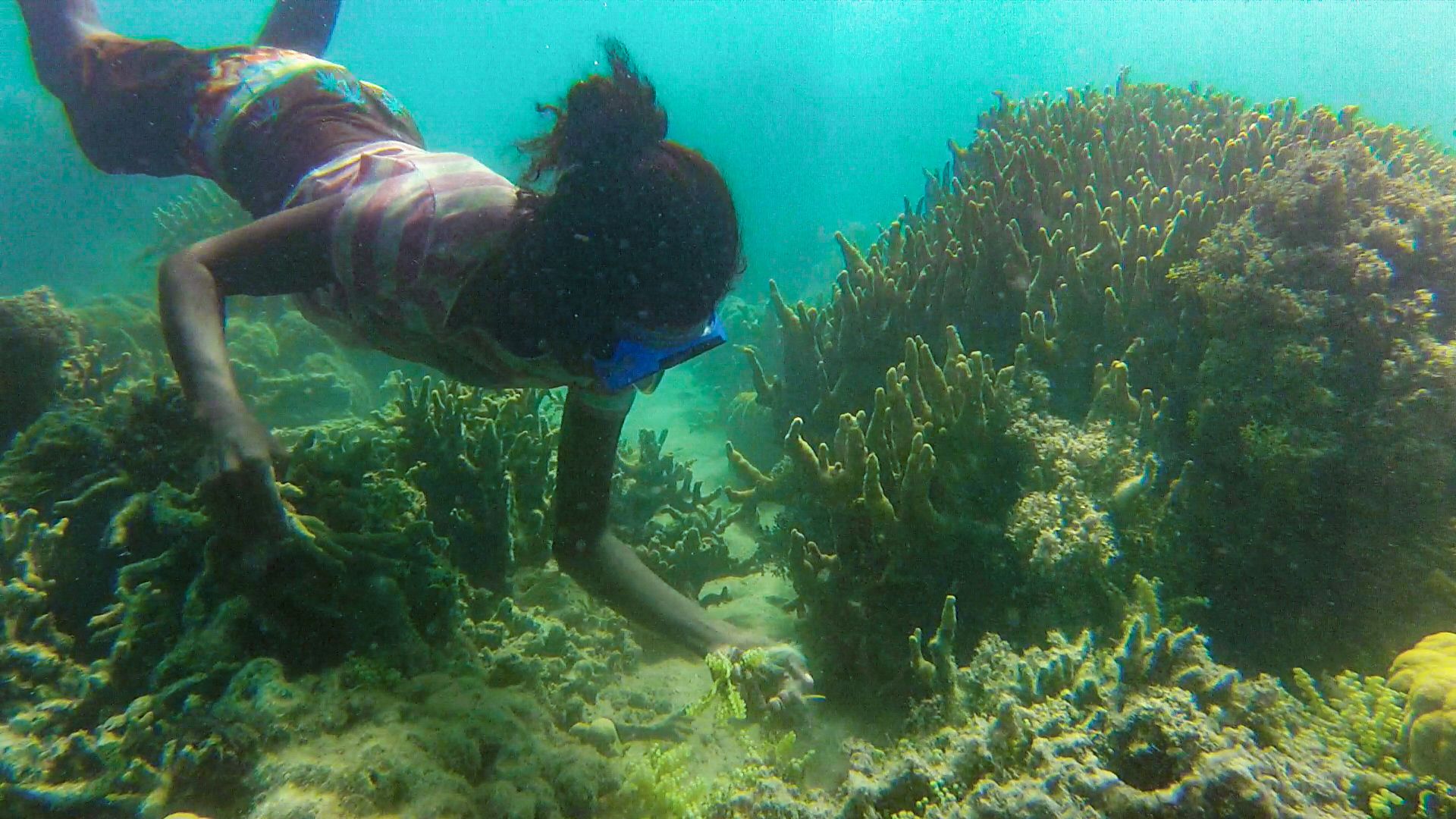
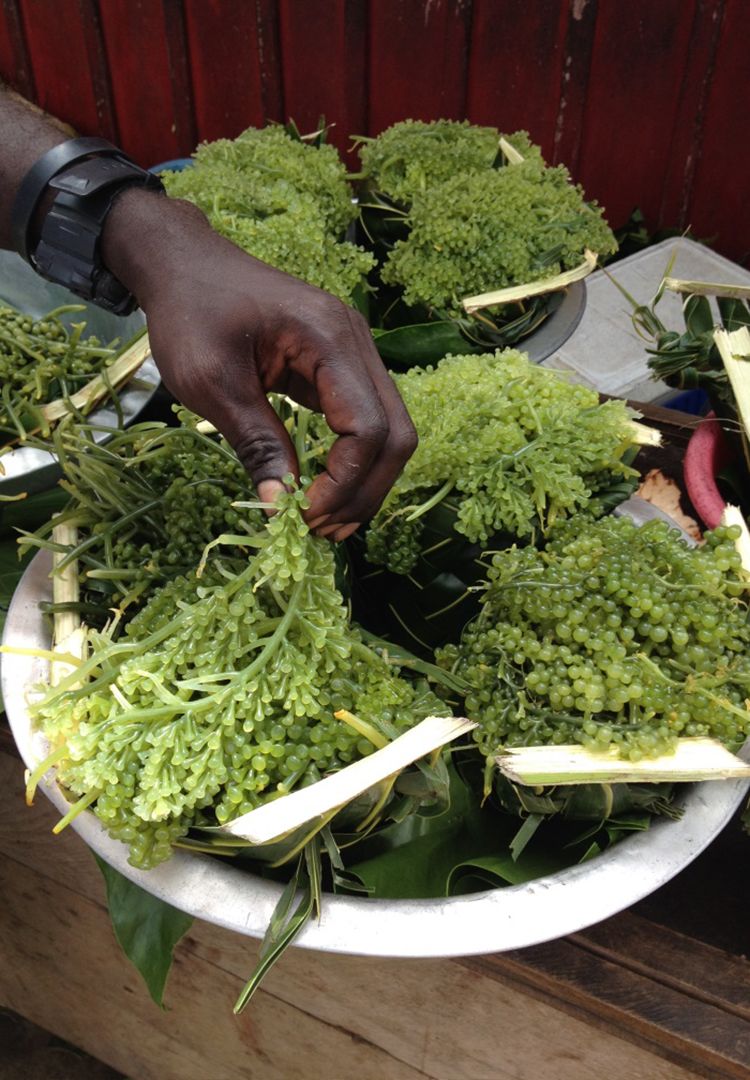
Villagers in the Saeraghi community on Ghizo Island, Solomon Islands, have long relied on sea grape harvesting for their livelihoods. Photo: WWF-Australia
Villagers in the Saeraghi community on Ghizo Island, Solomon Islands, have long relied on sea grape harvesting for their livelihoods. Photo: WWF-Australia
That changed with the establishment of a Locally Managed Marine Area in 2016, with support from the WWF Solomon Islands office. One of the leaders is Alpha Ghelly, a Saeraghi resident who spearheaded the community management program, integrating learnings from his mother with modern management techniques via WWF.
“My mom taught us about sea grapes, how to harvest it, how to use it … Our grannies, our ancestors used sea grapes. That history will not fade away,” Ghelly said. “Sea grapes will benefit us if we manage our sea grapes now,” he added, explaining that without managing the crop the community members’ grandchildren will not have the same opportunity to benefit from it.
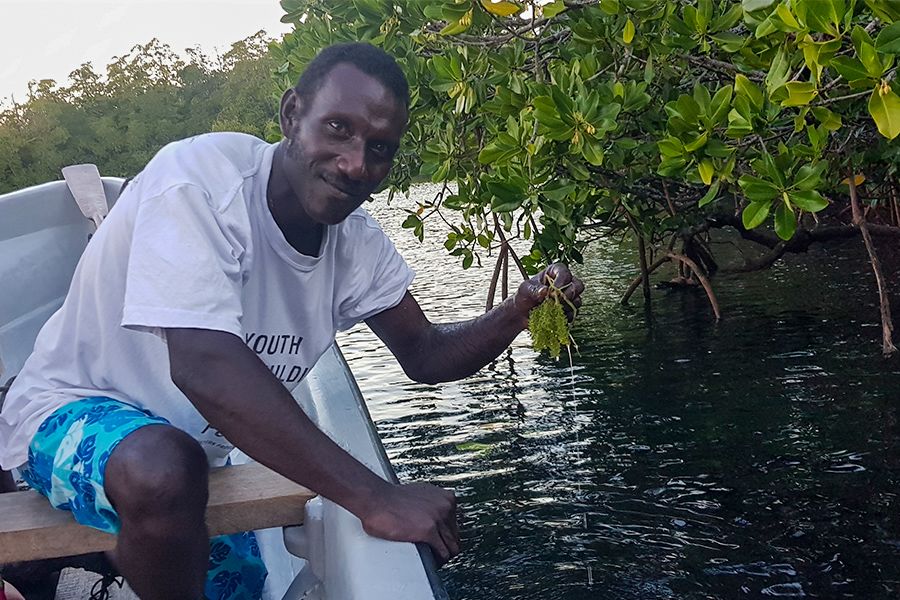
Alpha Ghelly shows freshly picked sea grapes. Photo: WWF-Australia / Madeleine Smitham
Alpha Ghelly shows freshly picked sea grapes. Photo: WWF-Australia / Madeleine Smitham
According to Ghelly, the locally implemented sea grape management program has a focus on awareness, rules on how, when, and how much can be harvested, and a strict two-week ban for those who do not abide by community rules. There’s also a livelihood component that aims to diversify local incomes from sea grapes.
“Since the management regime was established, [community members] venture out from high reliance on that resource to other small scale income generating activities such as poultry, canteens, bakery, sewing and fabric dying,” said Minnie Rafe, coordinator for the WWF Solomon Islands’ community-based fisheries management program.

Villagers in the Saeraghi community on Ghizo Island, Solomon Islands, have long relied on sea grape harvesting for their livelihoods. Photo: WWF-Australia
What has taken place in Saeraghi is part of a regional shift in how marine protected areas are being managed in the Pacific. As countries look to expand protected areas, creating mechanisms for effective community management will be key to ensuring future generations can benefit from the ocean too.
This means recognizing the importance of livelihoods in establishing sustainable fisheries and the effective management of MPAs by aid agencies, conservation organizations, and the government — something of growing importance due to the economic and social impacts of COVID-19.
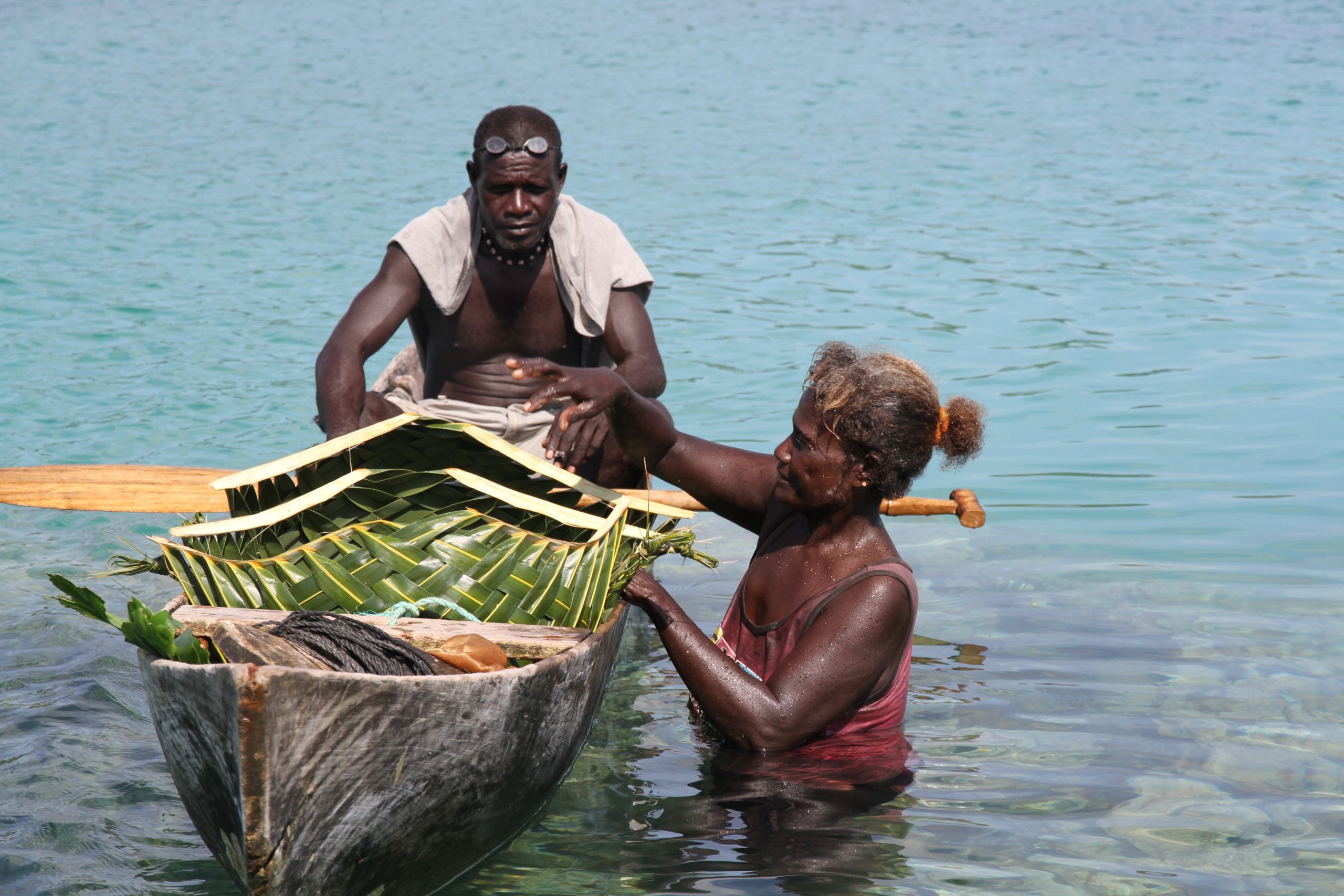
The locally implemented sea grape management program follows community rules that determine when and how much can be harvested. Photo: WWF-Australia / Karen Kalpage
The locally implemented sea grape management program follows community rules that determine when and how much can be harvested. Photo: WWF-Australia / Karen Kalpage
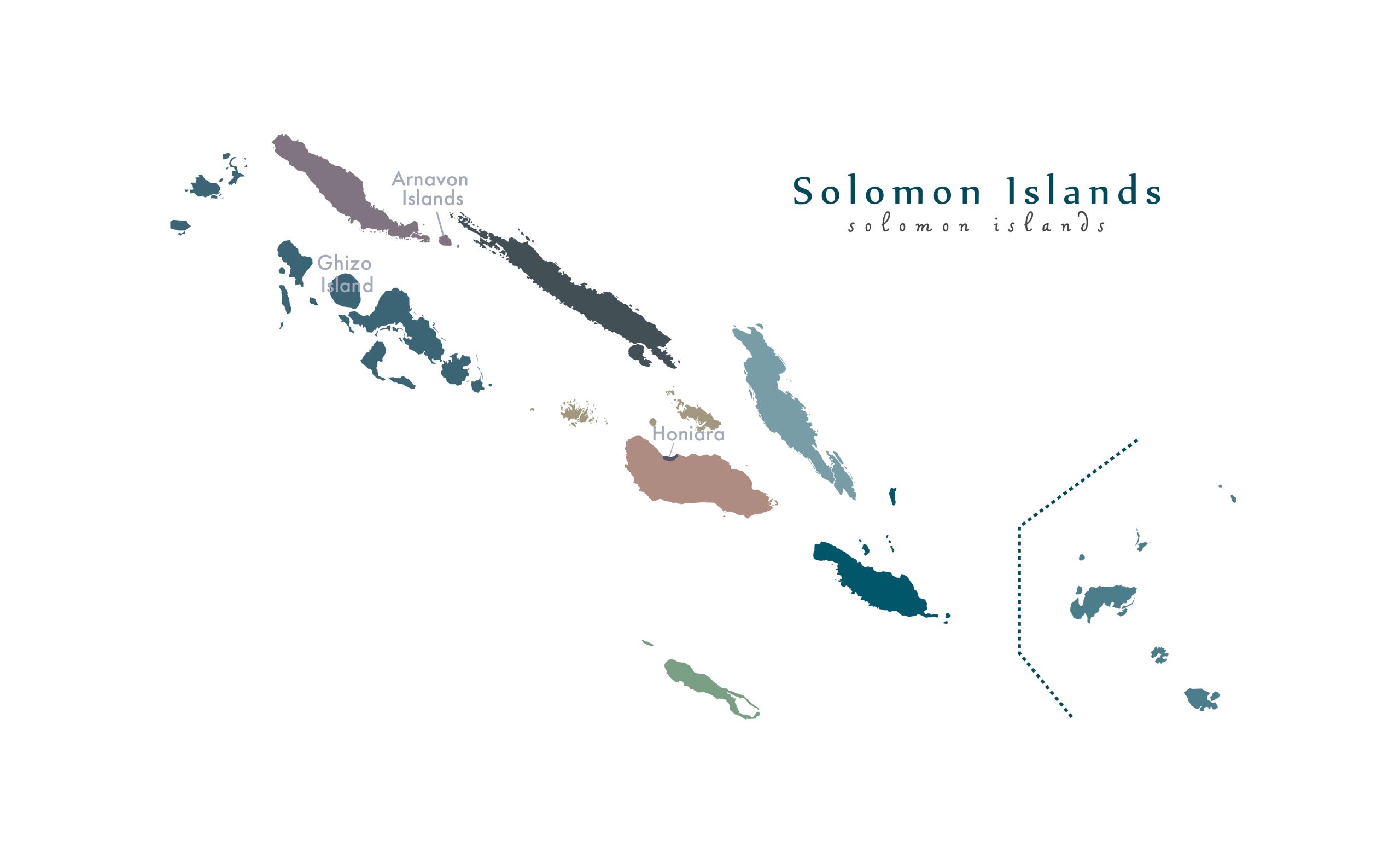
Centering on communities and traditional custodianship
Pacific island nations have long been leading on designating MPAs: In 2012, the Cook Islands and New Caledonia placed 2.5 million kilometers of the south Pacific under protection, while Fiji committed to protect 30% of its waters as MPAs by 2030.
Designating areas as protected on maps is one thing. But due to the region’s strong custom of traditional stewardship, local communities’ engagement is also essential to their effective management. One example of this is the southern Pacific Ocean’s fish stocks, some of the healthiest in the world due in part to the traditional custodianship of the oceans across the region.
“A lot of pacific islanders have a cultural underpinning of environmental stewardship as part of their culture, seeing not only how their culture is being honored, but how they [are] being heard and part of the process in conservation policies is critical.”
In the Solomon Islands, the third largest archipelago in the south Pacific, NGOs and the government have long taken a community-centered approach to marine protection.
The island nation spans 1.3 million square kilometers of marine territory within its exclusive economic zone — nearly all of which is under customary control. The Arnavon Community Marine Conservation area, the country’s only official MPA, was designated in 1995 and is home to the largest rookery for critically endangered hawksbill turtles in the region.
More recently, in 2010, the country passed the Protected Areas Act with the aim of giving communities a framework for protecting their customary land, formalizing traditional rules, and improving local food security. One of the key implementers has been the Solomon Islands LMMA Network, a group of practitioners — including WWF Solomon Islands, WorldFish, The Nature Conservancy, government ministries, and communities — working together to ensure the success of conservation and fisheries management projects through networking and information sharing.
“Communities are now viewed across the region as a central mechanism for owning the process of decision-making for rules and regulations around how to use, draw value from, and conserve coastal fisheries,” said Hampus Eriksson, a senior scientist at WorldFish in the Solomon Islands.
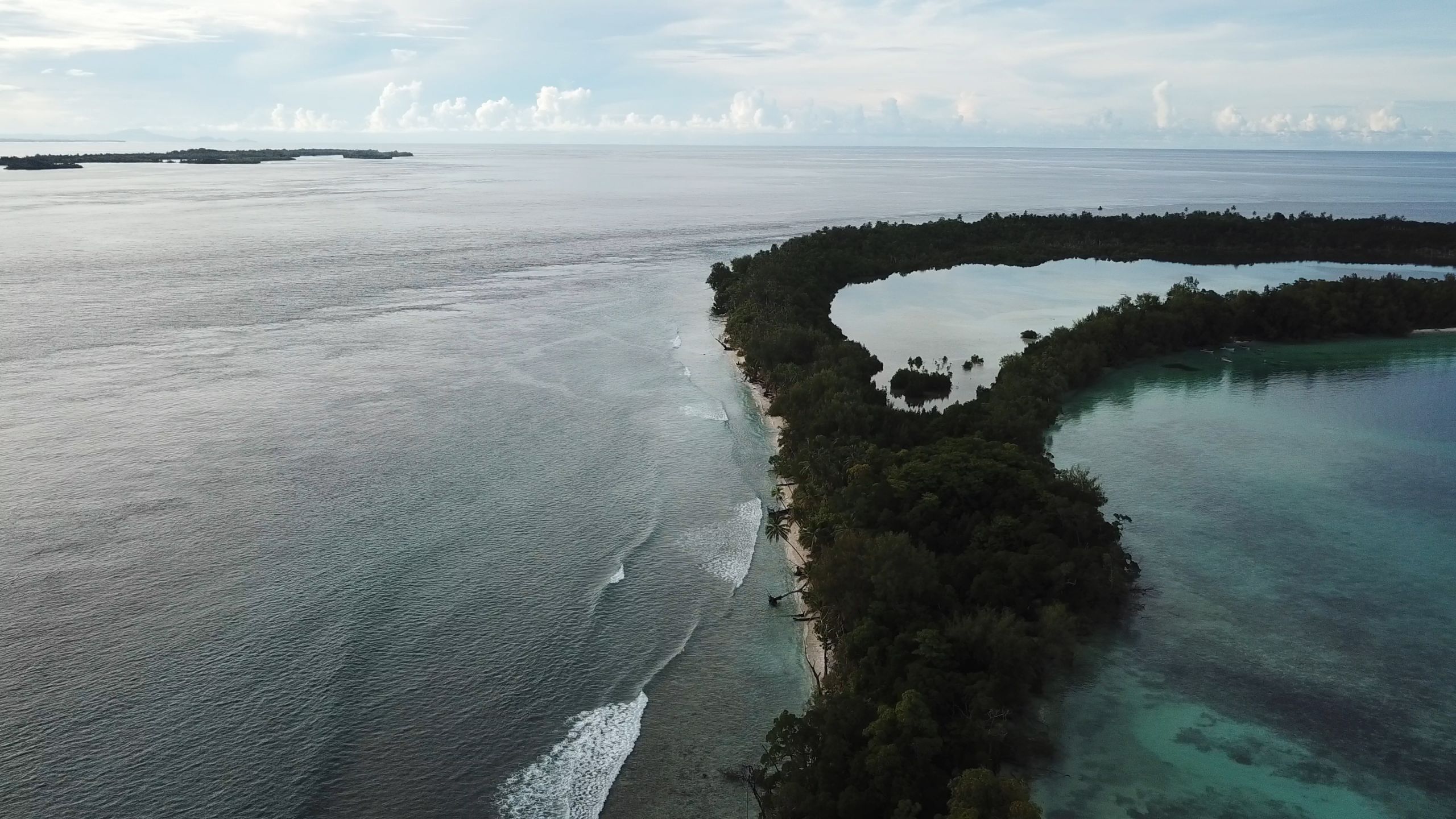
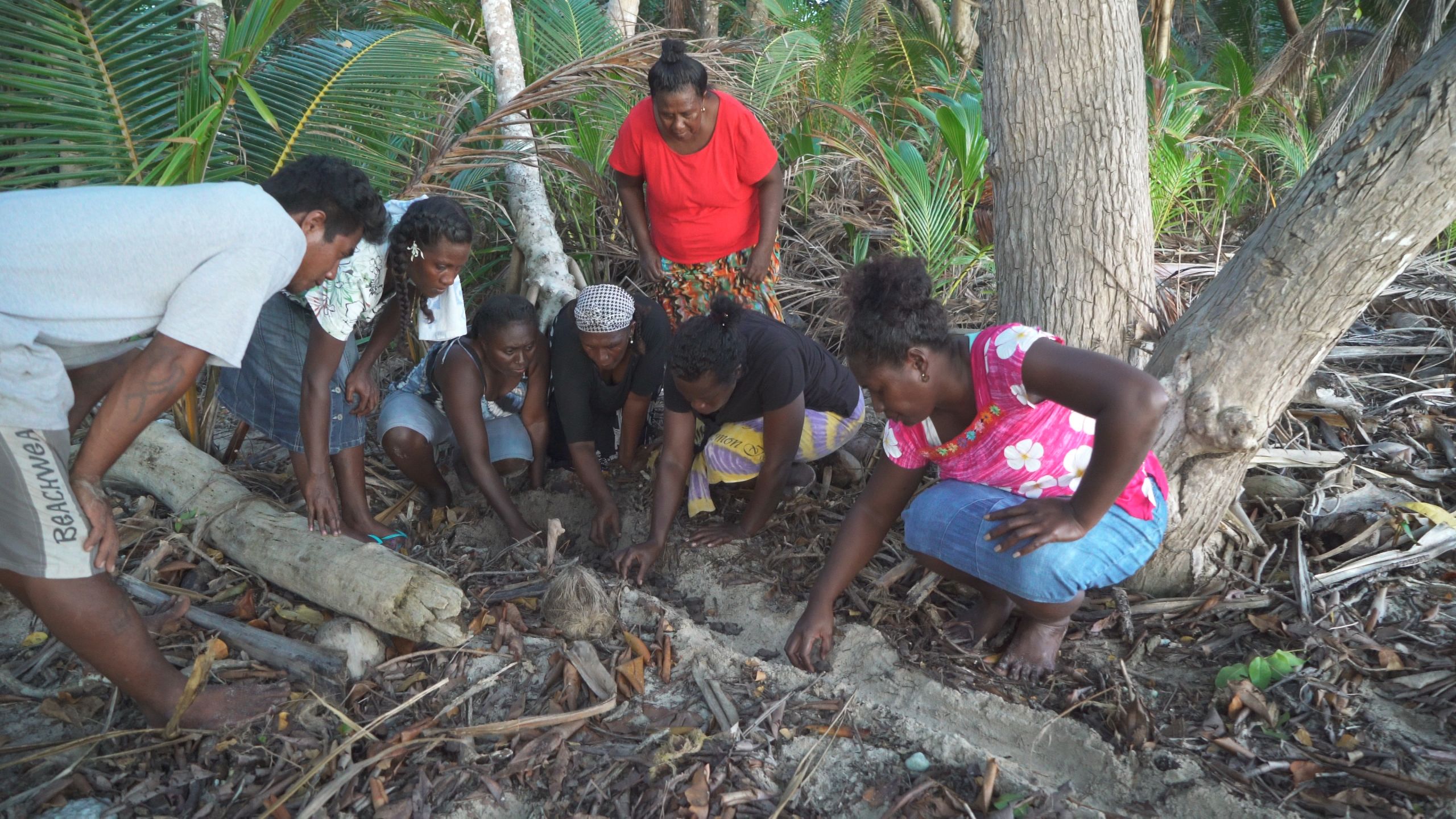
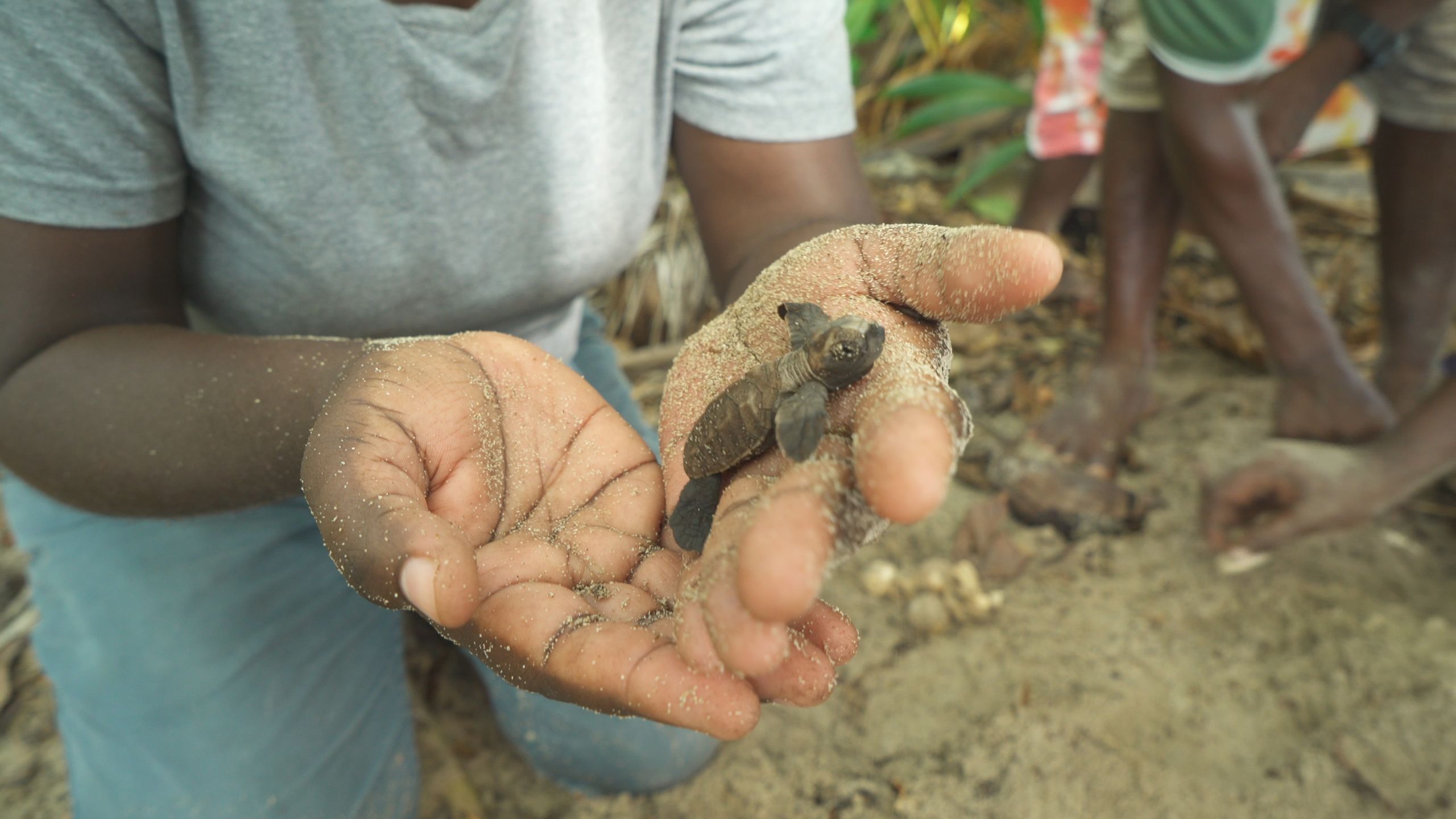

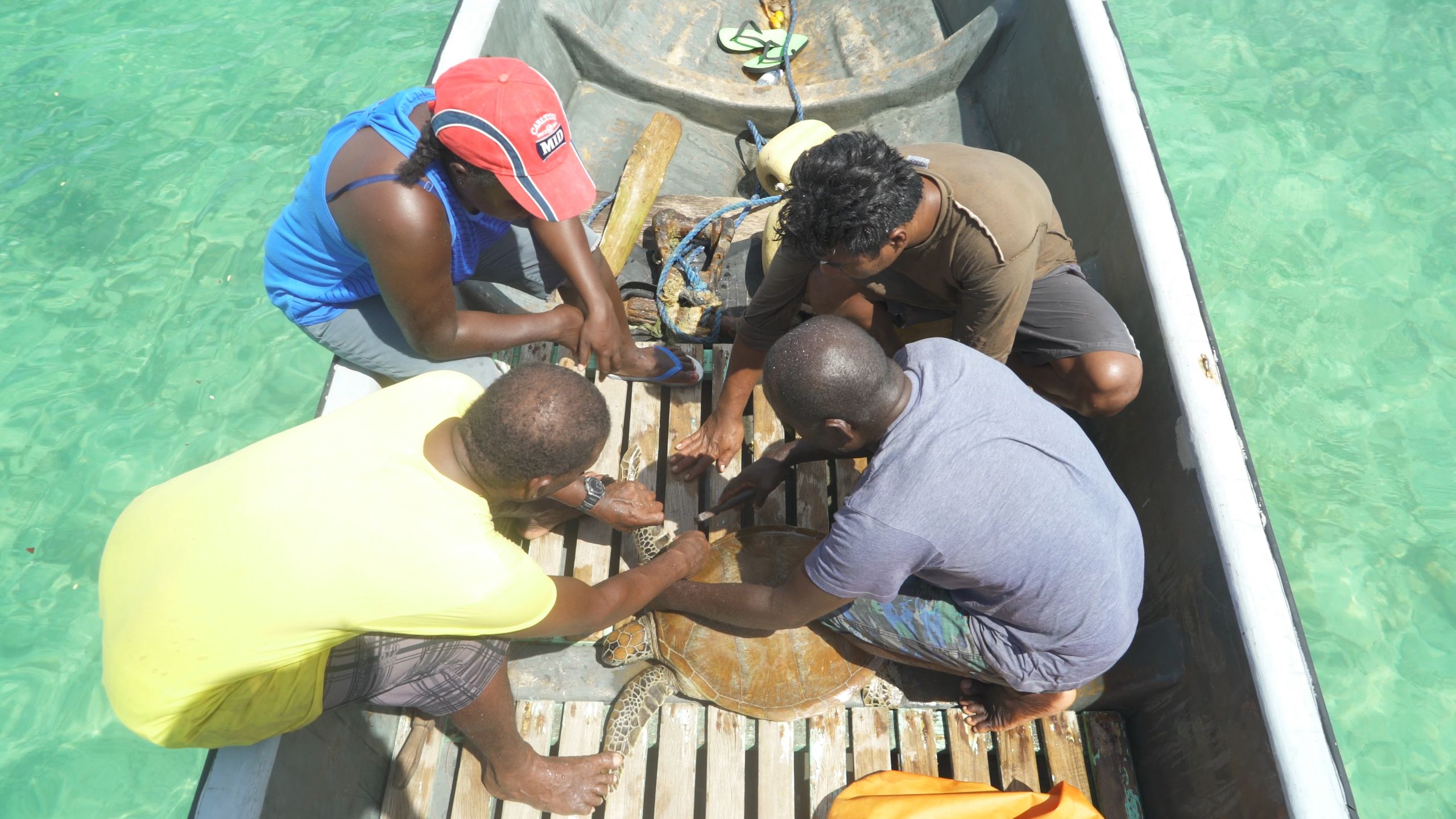

The Arnavon Community Marine Conservation area, the country’s only official MPA, is home to the largest rookery for critically endangered hawksbill turtles in the region. Photo: Henning Goll / The Nature Conservancy
The Arnavon Community Marine Conservation area, the country’s only official MPA, is home to the largest rookery for critically endangered hawksbill turtles in the region. Photo: Henning Goll / The Nature Conservancy

The Arnavon Community Marine Conservation area was established in 1995 in partnership with government and local communities. Photo: Henning Goll / The Nature Conservancy
The Arnavon Community Marine Conservation area was established in 1995 in partnership with government and local communities. Photo: Henning Goll / The Nature Conservancy

The marine park was established after three years of discussions between communities and government. Photo: Henning Goll / The Nature Conservancy
The marine park was established after three years of discussions between communities and government. Photo: Henning Goll / The Nature Conservancy

Community rangers deter poachers, and the park provides new livelihoods opportunities, such as employment as park rangers and revenue from ecotourism. Photo: Henning Goll / The Nature Conservancy
Community rangers deter poachers, and the park provides new livelihoods opportunities, such as employment as park rangers and revenue from ecotourism. Photo: Henning Goll / The Nature Conservancy
Bringing livelihoods into focus
Over the past decade, a core focus of the ministry has been to promote community-based resource management, in which tools, guidance, and capacity-building activities are conducted with communities interested in marine protection.
“The development of community fisheries management plans … is a participatory process where we facilitate and communities have to participate fully,” said Assaneth Buarafi, a fisheries officer at the Solomon Islands ministry of fisheries. “We are just there to assist and guide them [on] how to produce their management plans.”
While the Ministry does the outreach, it is up to communities to submit applications and get assistance from the government. With limited staff and much of the country only accessible by land or sea-based transportation, this leaves much of the implementation up to partner organizations like WorldFish and WWF Solomon Islands.
One thing that Buarafi has noticed, and hopes to expand work on going forward, is the importance of economic well-being as a prerequisite for effective LMMAs.
“Only by introducing livelihoods to communities can we add value to the marine managed areas,” said Buarafi, adding that the ministry aims to focus further on this.
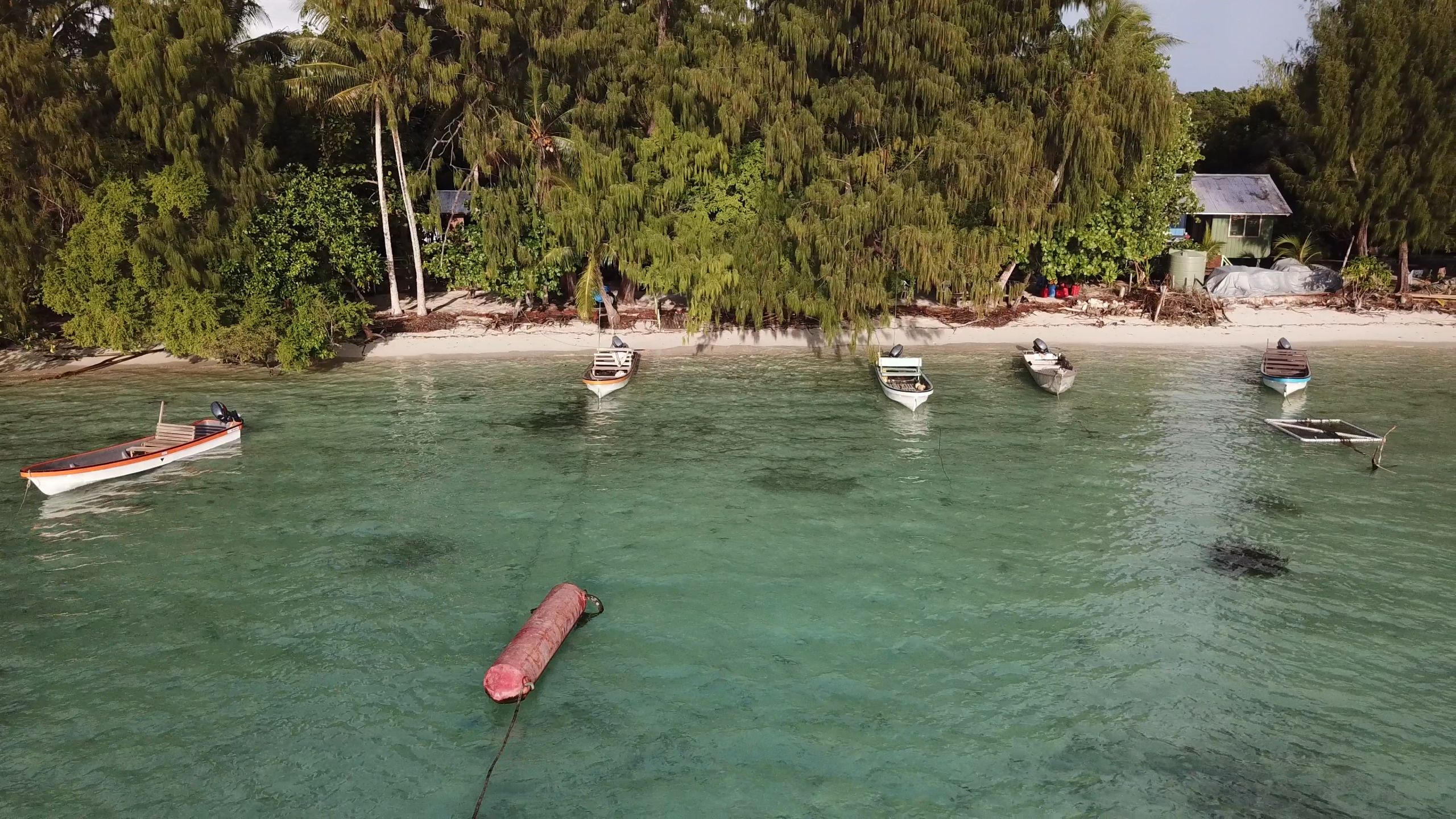
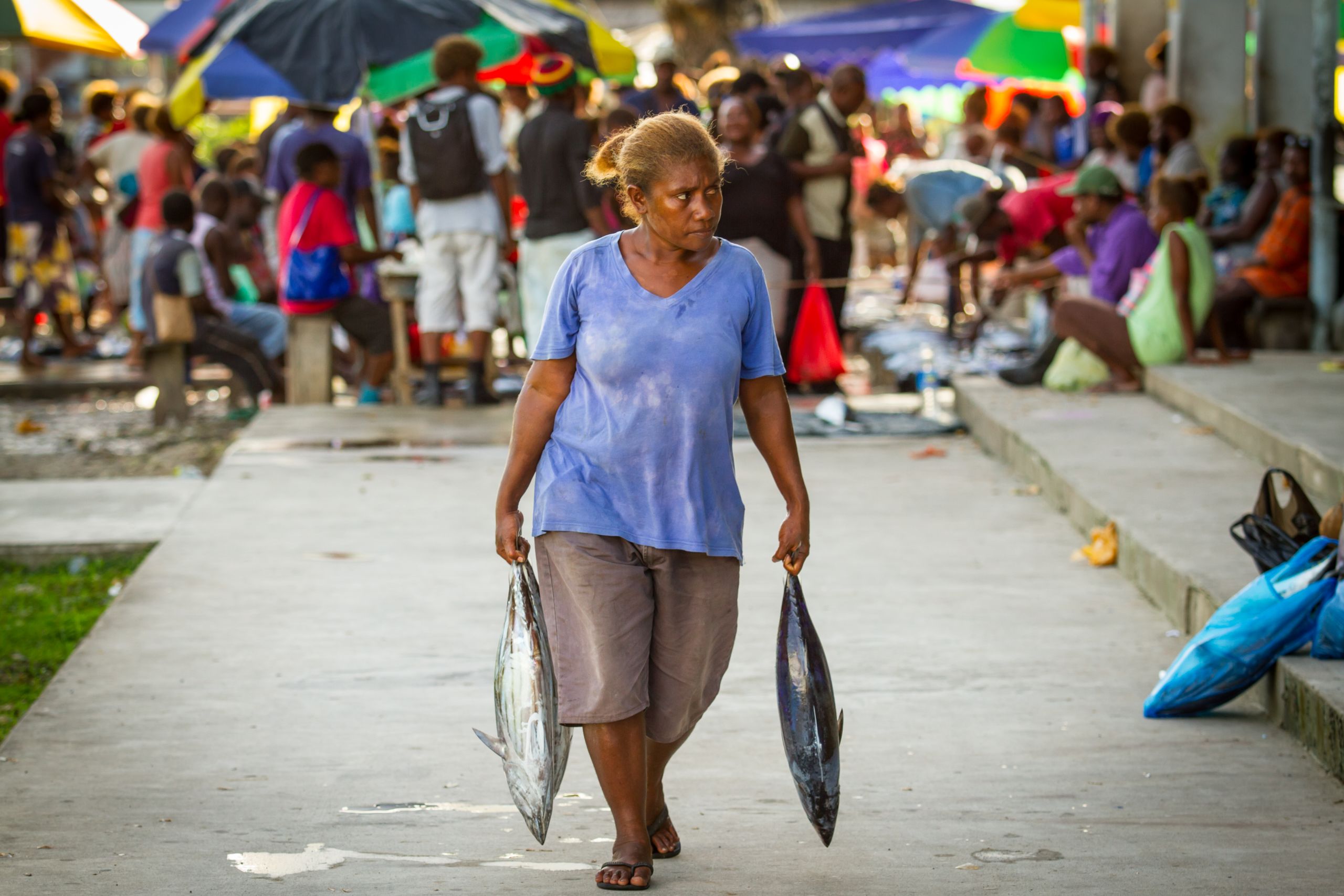
A woman carries tuna purchased at Auki market in Malaita Province. Photo by Filip Milovac / WorldFish
A woman carries tuna purchased at Auki market in Malaita Province. Photo by Filip Milovac / WorldFish
WWF Solomon Islands is also focusing more on livelihoods due to the close connection it has with marine protection.
“What we’ve learned over many years is CBRM is one approach, but you have to realize the dependency that communities have on fisheries, and the lack of opportunities in the Solomons for locals to make income, especially in the rural provincial areas,” said Shannon Seeto, country manager at WWF Solomon Islands. “They really depend on the fisheries.”

A woman cooks reef fish on hot coals, Fumato'o, Malaita Province. Photo by Filip Milovac / WorldFish
For Robyn James, gender and equity advisor for The Nature Conservancy in Asia Pacific, marine conservation just for the sake of it, “is a luxury of rich countries,” and not usually an option in the Solomon Islands, which are still largely subsistence based.
“Marine conservation, just for the sake of it, is a luxury of rich countries ... People need the marine resources to get a livelihood. The key is demonstrating that if you can put some limits on your resources, and manage it well, you actually get more from it.”
“People need the marine resources for their livelihoods,” James explained. “The key [is] that when communities are supported and can limit the harvesting of resources and allow species time to recover, there is more to harvest from the area from year to year.”

A woman cooks reef fish on hot coals, Fumato'o, Malaita Province. Photo by Filip Milovac / WorldFish
A woman cooks reef fish on hot coals, Fumato'o, Malaita Province. Photo by Filip Milovac / WorldFish

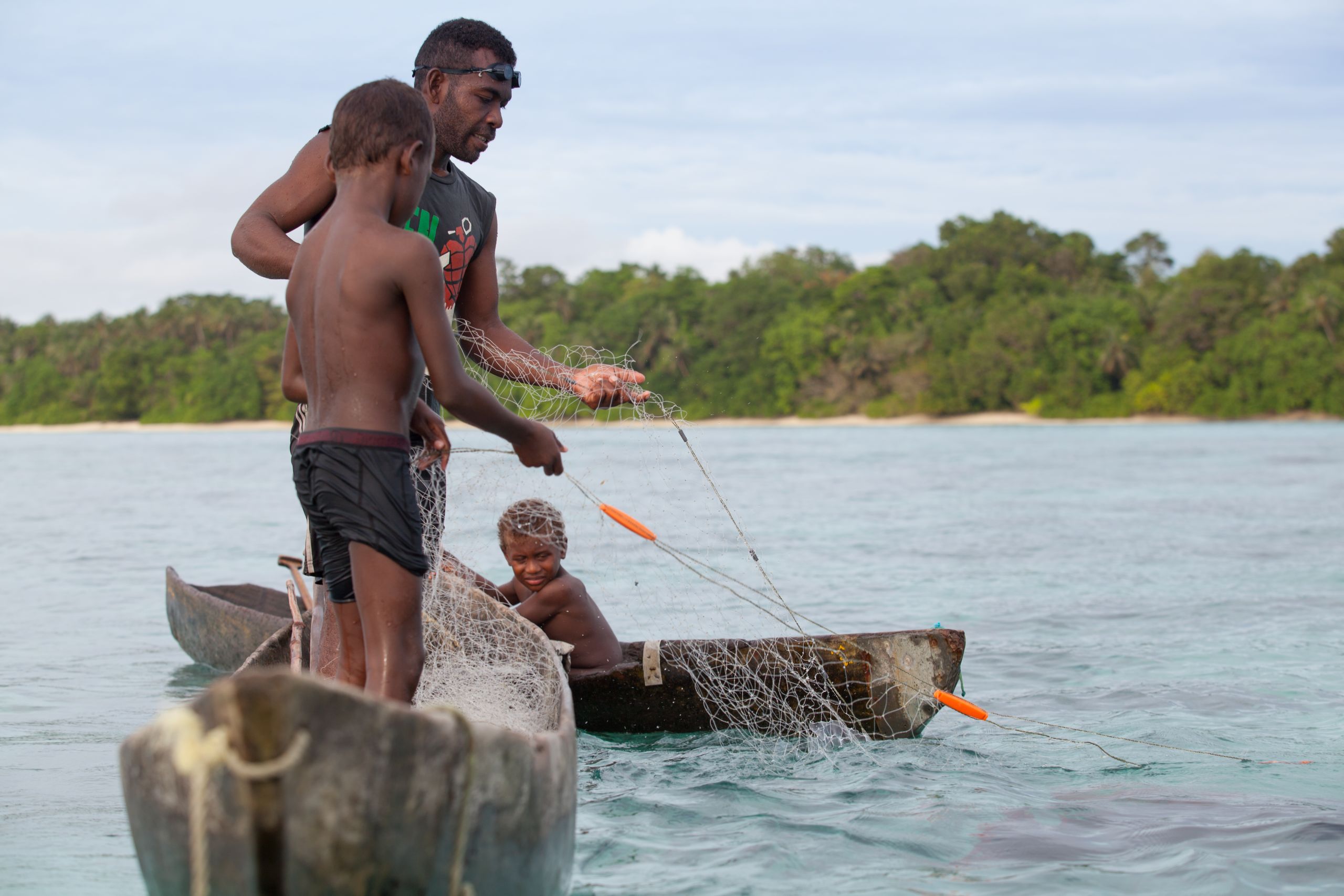
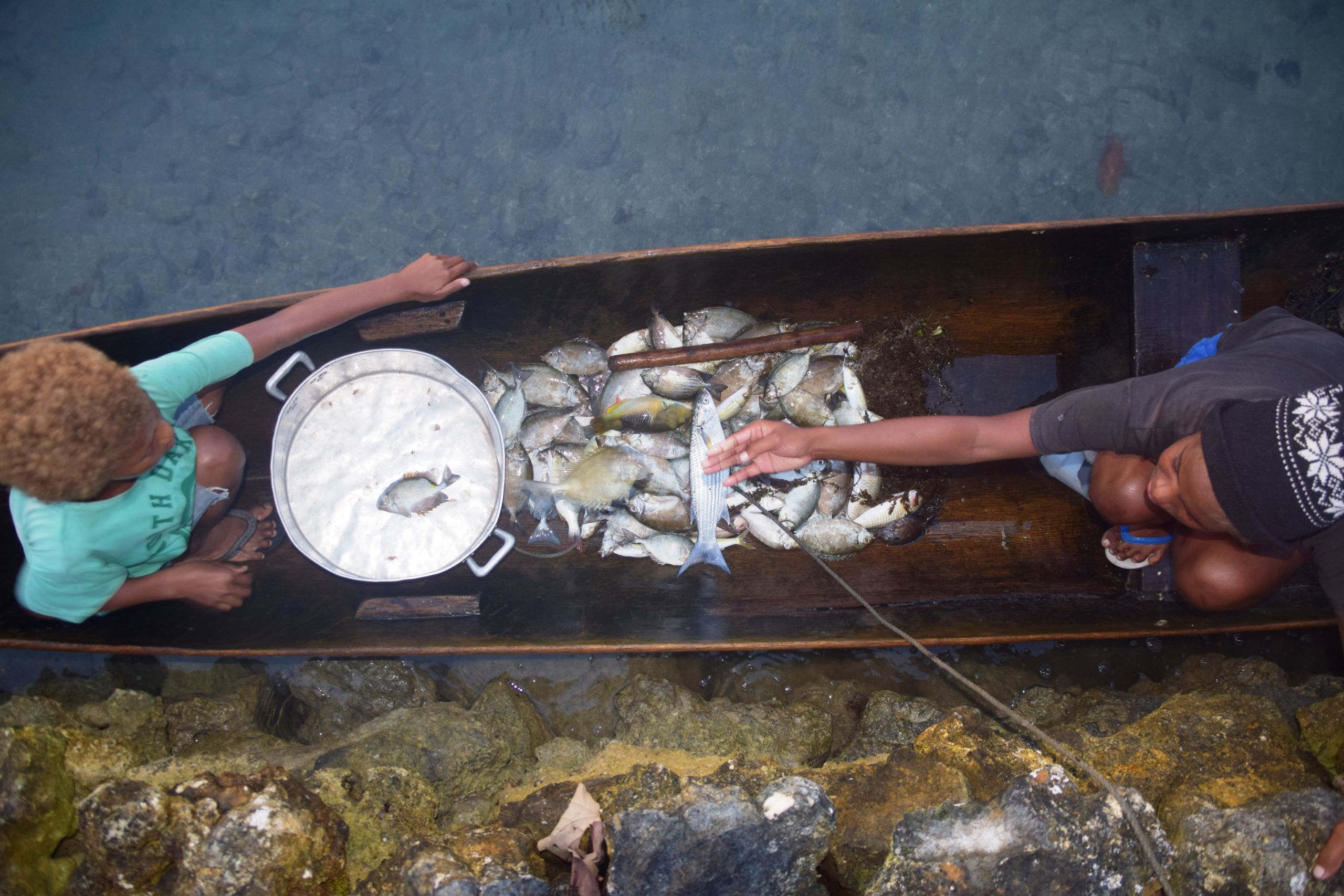
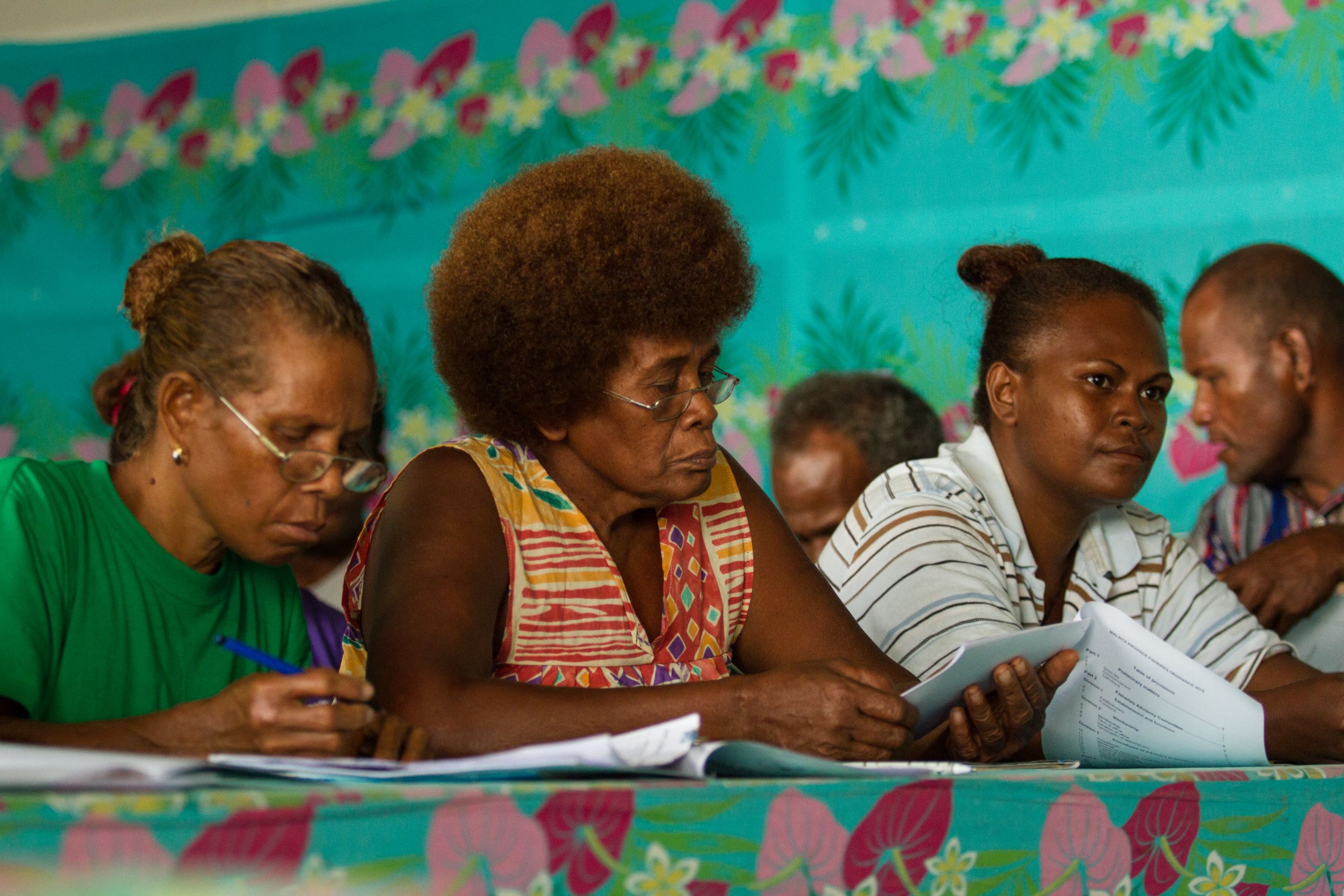


Two fishermen put out a net to catch reef fish in Fumato'o, Malaita Province. Photo by Filip Milovac / WorldFish
Two fishermen put out a net to catch reef fish in Fumato'o, Malaita Province. Photo by Filip Milovac / WorldFish

Fishers pulling in a fishing net in Fumato'o, Malaita Province. Photo by Filip Milovac / WorldFish
Fishers pulling in a fishing net in Fumato'o, Malaita Province. Photo by Filip Milovac / WorldFish

Children catch fish in Lau Lagoon, Malaita Island. Photo by Jan van der Ploeg / WorldFish
Children catch fish in Lau Lagoon, Malaita Island. Photo by Jan van der Ploeg / WorldFish

Women attend a workshop to discuss marine resource management issues in Maluu. The voices of women are often underrepresented in decisions on fisheries management. Photo by Filip Milovac / WorldFish
Women attend a workshop to discuss marine resource management issues in Maluu. The voices of women are often underrepresented in decisions on fisheries management. Photo by Filip Milovac / WorldFish

Women take part in a fisheries management meeting. Photo: Jan van der Ploeg / WorldFish
Women take part in a fisheries management meeting. Photo: Jan van der Ploeg / WorldFish
COVID-19 stressing local resources — and the environment
While the Solomon Islands has been able to largely avoid the devastating health impacts of COVID-19, the country has been affected by the global economic downturn. When lockdowns spread around the world in early 2020, the country saw a migration of urban residents back to their villages.
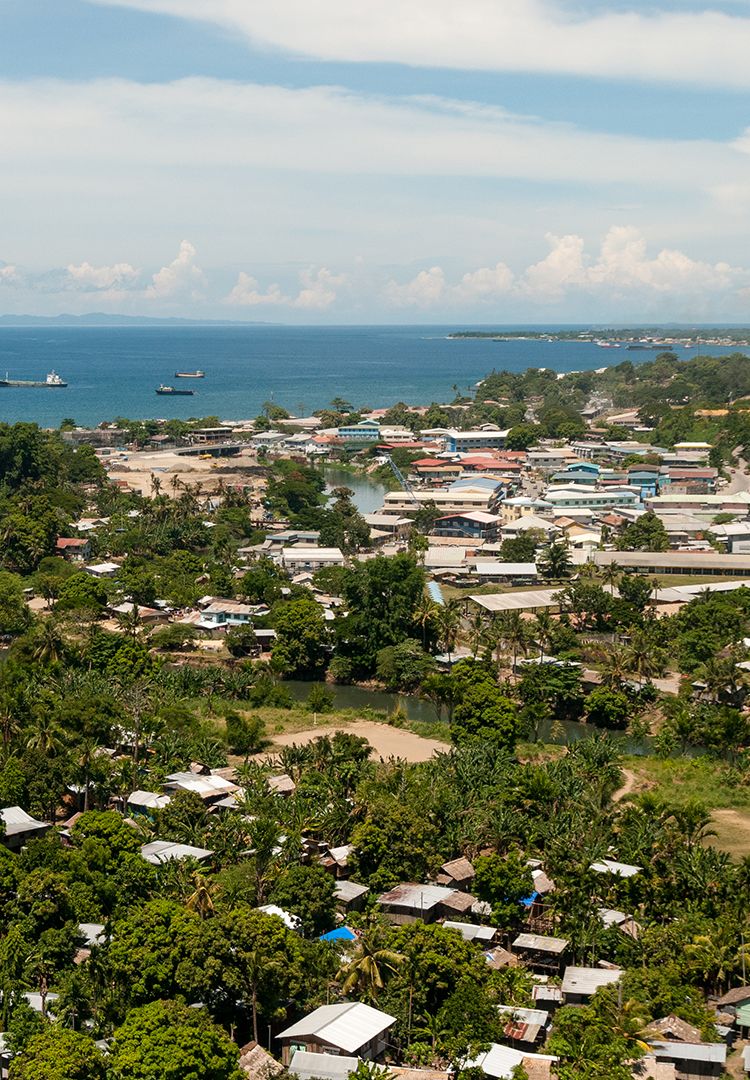
Honiara, capital of the Solomon Islands.
“It put a strain on food production,” WorldFish’s Eriksson said. “Fish and other aquatic foods play a key role in food and nutrition security during times of hardship in the Pacific, and that was true during COVID.”
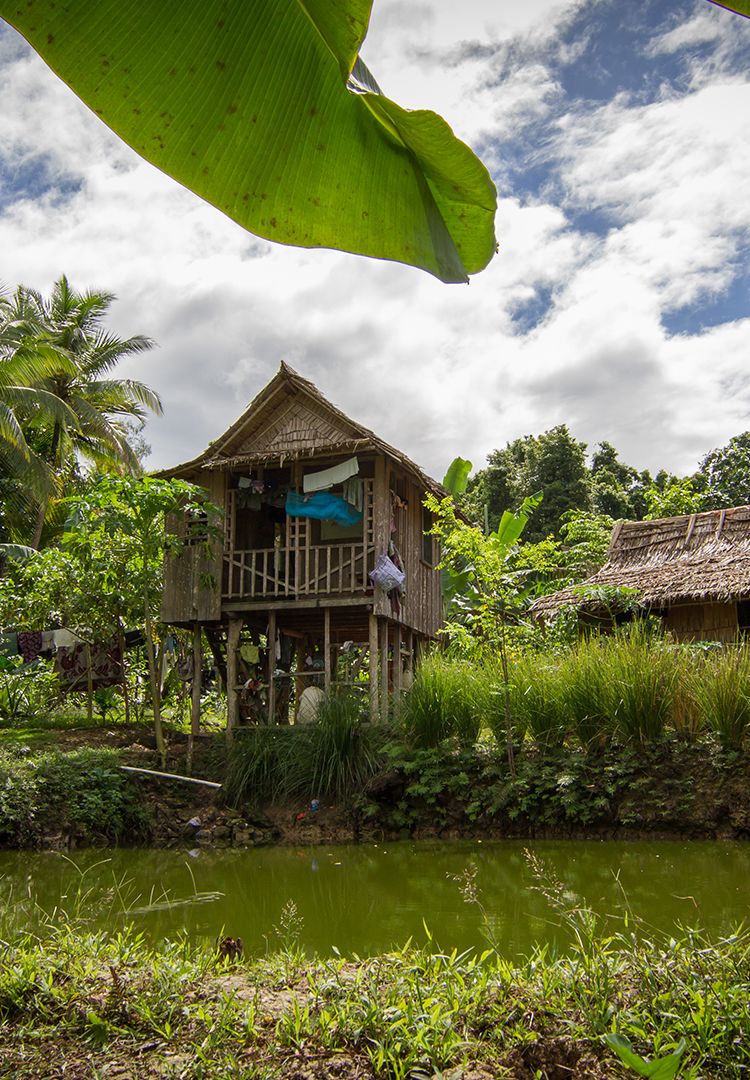
A household Mozambique tilapia aquaculture pond, Rafrafu village, Central Kwaraiae, Malaita Province. Photo by Filip Milovac / WorldFish
The pandemic will also mean some projects need to shift their focus. In some areas, such as around the Arnavon Islands, ecotourism had been seen as one venue to improve local livelihoods. Now, with borders closed and international tourism unlikely to recover for some time, new alternatives will have to be implemented.

Honiara, capital of the Solomon Islands.
Honiara, capital of the Solomon Islands.

A household Mozambique tilapia aquaculture pond, Rafrafu village, Central Kwaraiae, Malaita Province. Photo by Filip Milovac / WorldFish
A household Mozambique tilapia aquaculture pond, Rafrafu village, Central Kwaraiae, Malaita Province. Photo by Filip Milovac / WorldFish
“We’re pivoting a lot of our work to be around the local, not international market, moving from ecotourism to do more around education and resource management locally,” TNC’s James said. “[This will be] aimed at schoolkids getting a resource center, rather than tourists getting an ecolodge.”
Another challenge will be how to take the CBRM approach and ensure that it scales without sacrificing the important community engagement processes.
“How do you reach all the communities in a country?” Eriksson asked, explaining that one approach is to work through networks of national agencies, provincial officers, NGOs, civil society groups, and churches to raise awareness and spread the word about the opportunities they have available to them to do CBRM.
With 2021 comes the beginning of the United Nations Decade of Ocean Science for Sustainable Development, which explicitly states the importance of inclusive approaches and the role of communities and key recipients of scientific knowledge. The lessons and learnings of remote communities in the Solomon Islands and neighboring Melanesian nations will be crucial in scaling up LMMAs as both a conservation and sustainable development strategy — both regionally and globally.
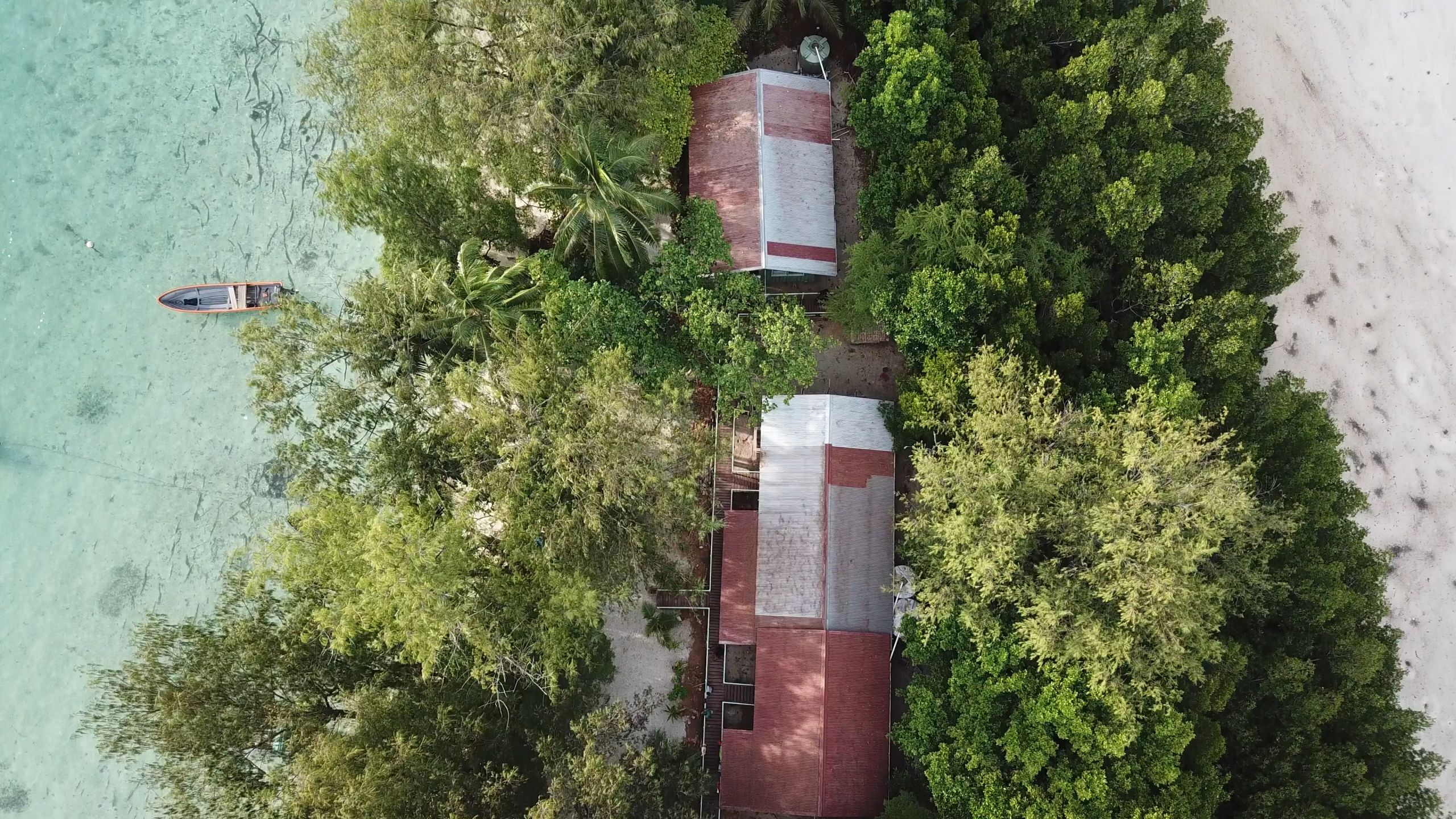
Visit the Turning the Tide series for more coverage on climate change, resilience building, and innovative solutions in small island developing states. You can join the conversation using the hashtag #TurningtheTide.
Reporting: Nithin Coca
Editor: Helen Morgan
Shorthand production: Naomi Mihara
Photos/video: WWF / WorldFish / Henning Goll for The Nature Conservancy


